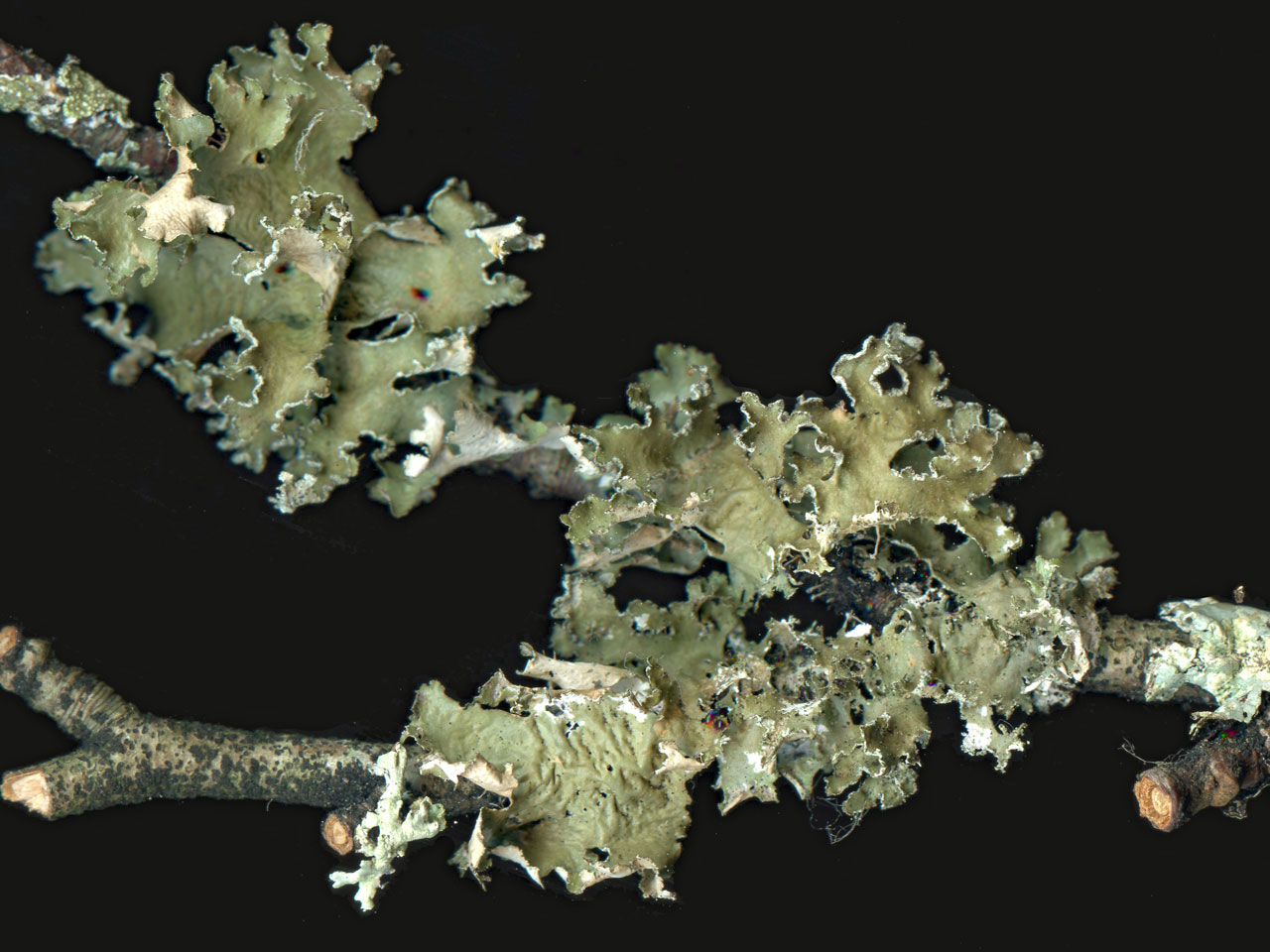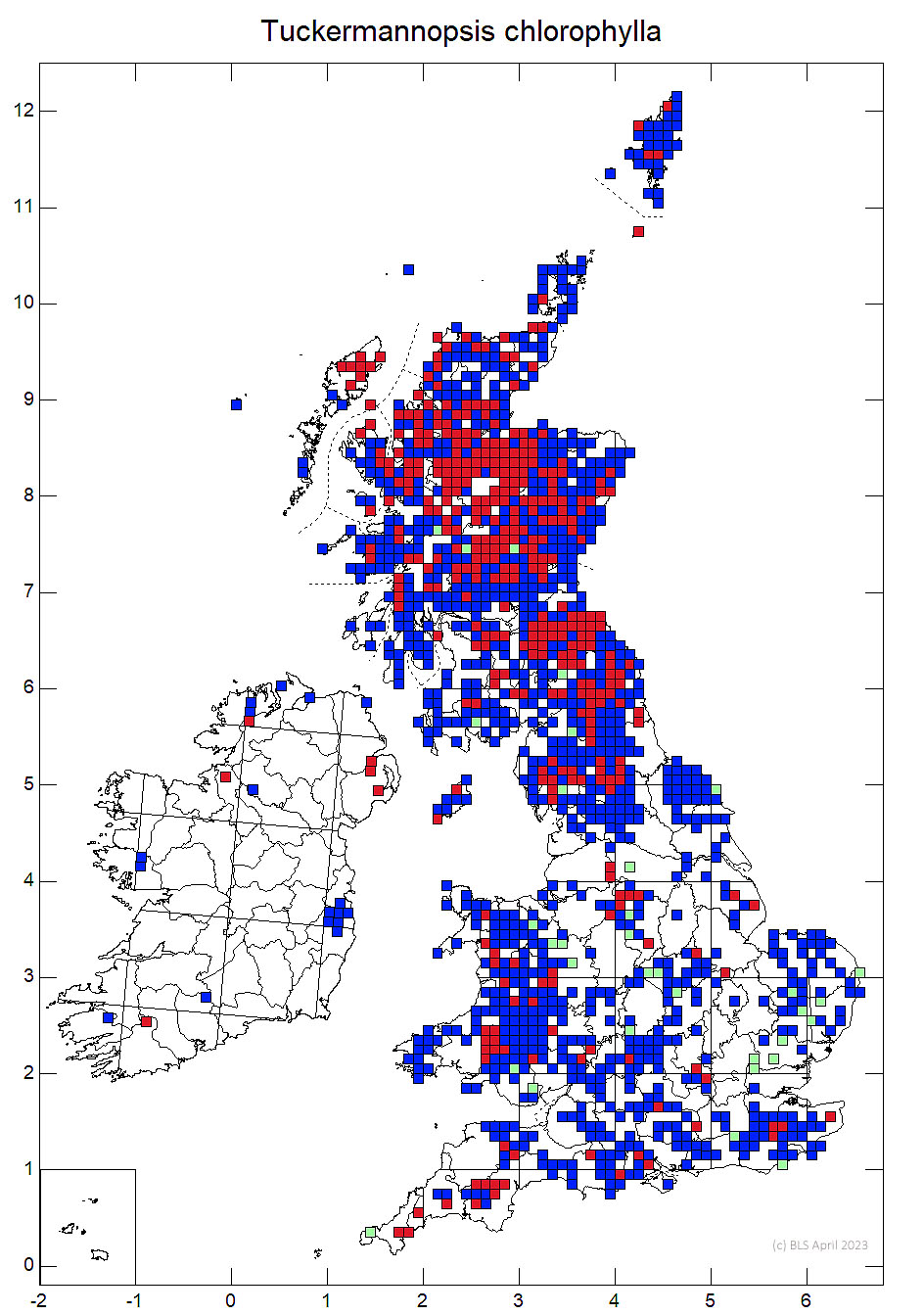Tuckermannopsis chlorophylla
A small to medium sized leafy lichen with a wavy, crinkled, notched to deeply incised outline. The upper surface is pale to medium brown, when wet becoming olive-green and semi-translucent, with marginal grey-white soredia and the lower surface is white to pale brown. A species of wide range of well lit acid habitats on bark, lignum and rock. Widespread but very sensitive to ammonia pollution and in serious decline in agricultural lowland areas.
Thallus 1–6 cm diam., foliose, loosely tufted, rarely rosette-forming; lobes few to numerous, 1–3 × 0.2–1 cm, weakly channelled, wavy, crinkled, notched or often deeply incised, entirely ascending or raised at the margins; upper surface pale to medium brown, when wet becoming olive-green and semi-translucent; pseudocyphellae absent; soredia frequent, grey-white, entirely marginal; lower surface white to pale brown, becoming paler towards the centre, wrinkled, rhizines sparse and whitish, or absent. Apothecia very rare, sessile; disc to 3 mm diam.; thalline margin sorediate. Asci 30–40 × 7–10 μm; paraphyses straight, sparsely branched, with swollen tips. Ascospores globose, ca 5 μm diam. Pycnidia sparse, marginal and protruding. Conidia dumb-bell shaped, 5–6 x ca 1.5 μm. Medulla C–, K–, KC–, Pd–, UV– (protolichesterinic acid).
The marginal soralia, C– thallus and coloration are distinctive. Brown specimens of Platismatia glauca found in exposed situations remain unchanged in colour when wet, instead of turning semi-translucent. The underside of T. chlorophylla becomes paler towards the centre while that of Platismatia glauca becomes darker. Cetraria sepincola differs in the abundant apothecia, the darker thallus and absence of soredia.
On twigs, branches and trunks of wayside and woodland trees, shrubs, fence posts, also rarely on coarse-grained siliceous rock and gravestones.

Throughout Britain, especially in the north and west, however rapidly declining or extinct in areas with high levels of ammonia pollution; rare in Ireland.
This species has suffered a recent and very marked decline in lowland areas with intensive agriculture and is very sensitive to ammonia pollution. Potentailly now a Red List species.
Cannon, P., Divakar, P., Yahr, R., Aptroot, A., Clerc, P., Coppins, B., Fryday, A., Sanderson, N. & Simkin, J. (2023). Lecanorales: Parmeliaceae, including the genera Alectoria, Allantoparmelia, Arctoparmelia, Brodoa, Bryoria, Cetraria, Cetrariella, Cetrelia, Cornicularia, Evernia, Flavocetraria, Flavoparmelia, Hypogymnia, Hypotrachyna, Imshaugia, Melanelia, Melanelixia, Melanohalea, Menegazzia, Montanelia, Nesolechia, Parmelia, Parmelina, Parmeliopsis, Parmotrema, Platismatia, Pleurosticta, Protoparmelia, Pseudephebe, Pseudevernia, Punctelia, Raesaenenia, Tuckermannopsis, Usnea, Vulpicida and Xanthoparmelia. Revisions of British and Irish Lichens 33: 1-98.
Text by N A Sanderson, based on Cannon et al (2023).

